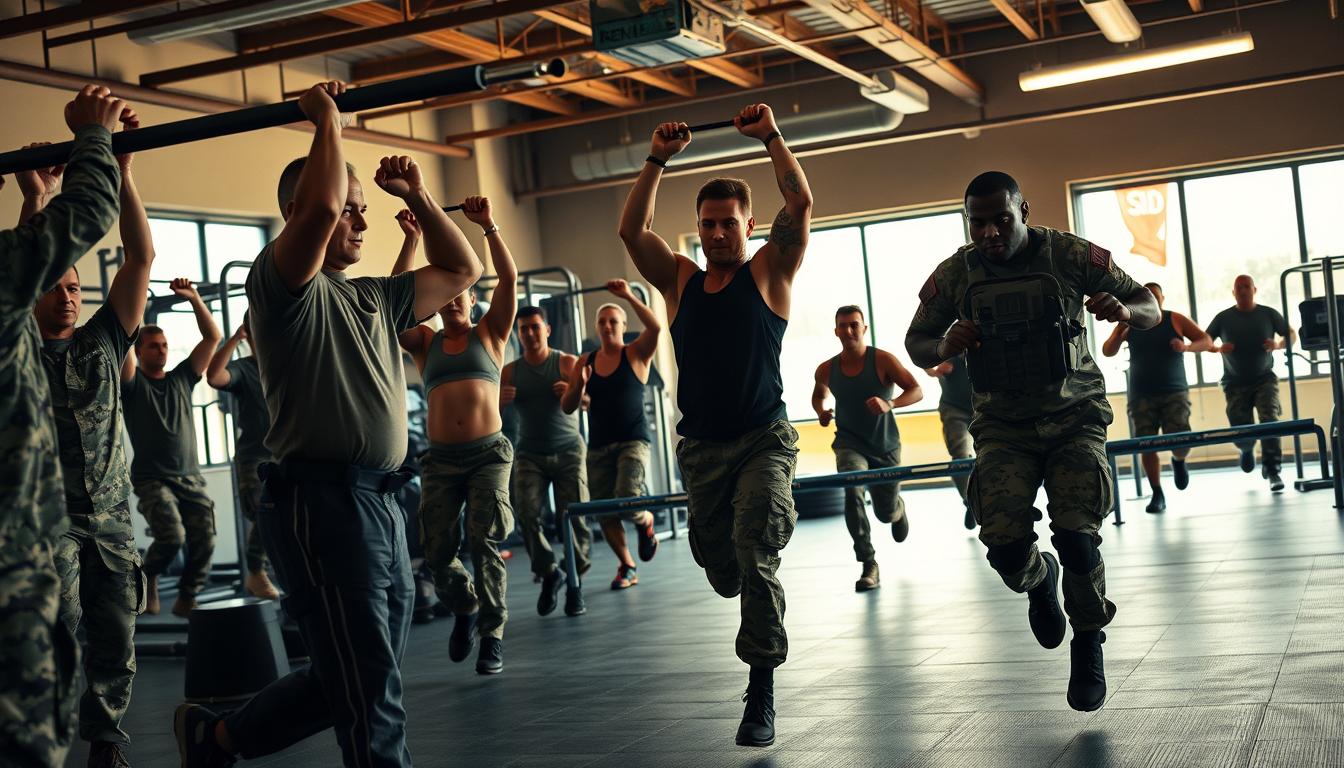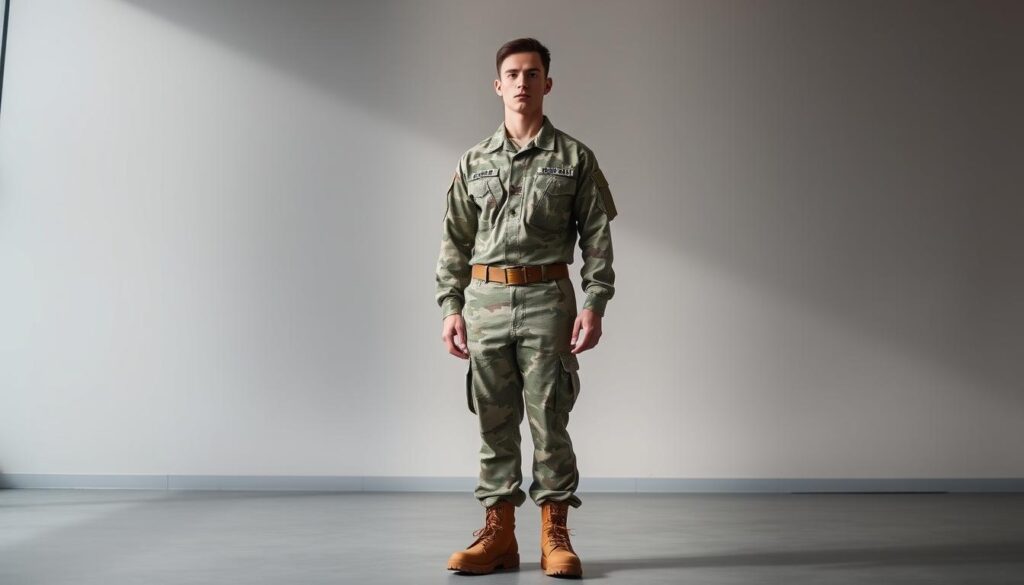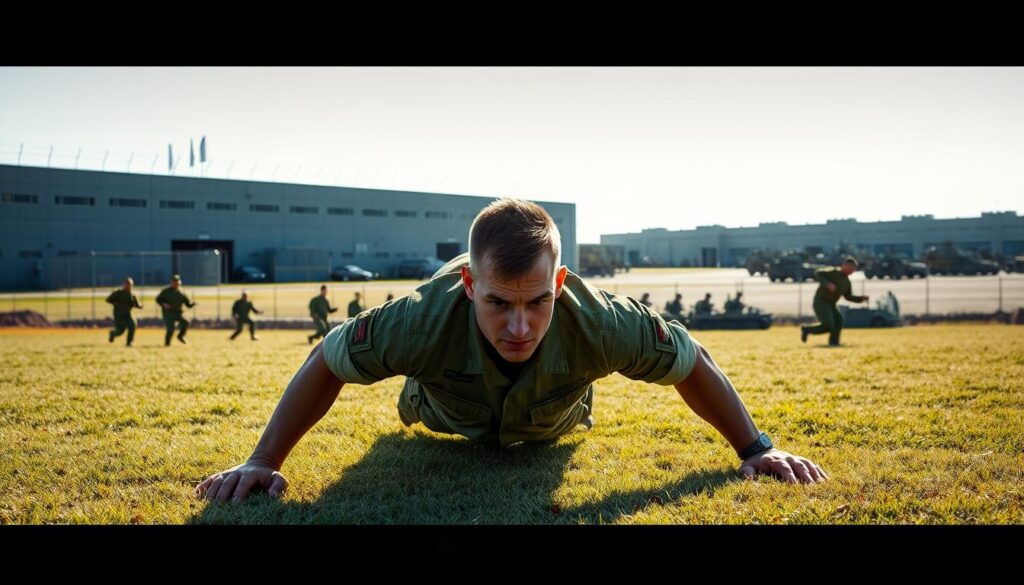Are you ready to meet the tough fitness standards needed to join the military? Becoming a Soldier is not just about mental strength. It also requires a high level of physical fitness.
The Army Fitness Test (AFT) is key to making sure Soldiers are ready. It checks their physical skills and helps build a fitness culture in the Army.
To join the Army, candidates must meet certain physical requirements. Knowing these standards is vital for anyone wanting to serve.
Key Takeaways
- The Army Fitness Test (AFT) is crucial for maintaining Soldier readiness.
- Candidates must meet specific physical standards to be eligible for enlistment.
- The AFT fosters a culture of fitness within the Army.
- Understanding the physical requirements is essential for potential recruits.
- The military has rigorous fitness standards for enlistment.
Overview of Army Enlistment Physical Standards
Physical fitness is key in Army enlistment. The Army has standards to check a recruit’s physical ability. These standards make sure Soldiers can do their jobs well and safely.
Importance of Physical Fitness
Physical fitness is very important in the Army. It helps Soldiers do their jobs and handle tough situations. The Army’s fitness test checks strength, endurance, and agility.
To learn more about the Army’s physical fitness requirements, visit the official Army Enlistment Fitness Requirements page.
Key Components of the Evaluation
The Army’s fitness evaluation has several key parts. The Army Fitness Test (AFT) includes five events:
- 3 Repetition Maximum Deadlift
- Hand-Release Push-Up
- Sprint-Drag-Carry
- Plank
- Two-Mile Run
These events test strength, endurance, agility, and stamina.
The AFT is a detailed test. It shows how ready a Soldier is for military service.
Basic Medical Requirements for Enlistment
The Army checks each candidate’s health before they join. This is to make sure they can handle military life. It’s all about being fit for service.
Vision and Hearing Standards
Candidates need to pass vision and hearing standards to join. They must see well, with or without glasses, and have normal color vision. Also, they must hear well and not have big hearing problems.
The Army uses special tests for vision and hearing. For vision, they check how well you can read from an eye chart. Hearing tests check if you can hear different sounds.
Medical History Evaluation
The Army looks closely at a candidate’s medical history. Some health issues, like asthma after age 13, can stop you from joining. They check medical records and might do more tests.
The military medical clearance makes sure candidates are healthy enough for the Army. They look at medical history, do a physical exam, and might do more tests.
Some with health problems might get a waiver. This lets them join even if they don’t meet all the health standards. But, waivers are only for minor or manageable health issues.
Physical Fitness Test Components
The Army Physical Fitness Test checks a candidate’s physical skills through tough events. It’s key to see if they’re ready for service.
Push-Ups and Sit-Ups Requirements
The test includes Hand-Release Push-Ups and sit-ups. For push-ups, candidates must touch their chest to the ground and extend their arms fully. Sit-ups require curling up from a lying position and touching their elbows to their knees.
Proper technique is essential for both push-ups and sit-ups. This helps avoid injuries and ensures a valid score.
Two-Mile Run Standards
The Two-Mile Run tests a candidate’s endurance. They must finish the run within a time that depends on their age and gender.
The run is timed on a measured course. This helps determine their score.
| Event | Minimum Score |
|---|---|
| Hand-Release Push-Up | 60 points |
| Sit-Ups | 60 points |
| Two-Mile Run | 60 points |
Candidates need to score at least 60 points on each event to pass. Achieving this requires consistent training and a well-structured fitness regimen.
Age and Gender Considerations in Requirements
The Army makes sure its physical tests are fair by considering age and gender. This helps because men and women, and people of different ages, have different physical abilities.
Age Group Differences in Standards
The Army’s fitness tests change with age. This is because people’s bodies change as they get older. Older candidates face easier tests than younger ones.
This fairness is key. It makes sure everyone is judged based on their own physical abilities.
For example, the Army’s physical fitness test parts change with age. This is because physical skills can drop as we get older. It helps keep the tests fair for all ages.
Gender-Specific Physical Assessments
The Army also has tests for men and women separately. This is because men and women have different physical abilities. It makes sure the tests are fair for everyone.
The Army’s Physical Fitness Test (APFT) has different rules for men and women. This includes push-ups, sit-ups, and a two-mile run. It’s all about making sure the tests are fair for both men and women.
Key aspects of gender-specific assessments include:
- Different scoring tables for men and women to reflect their different physical capabilities.
- Standards that are tailored to the physiological differences between genders, ensuring a fair evaluation.
By looking at age and gender, the Army wants to make sure its tests are fair. It aims to accurately see if someone can serve in the Army.
Preparing for the Army Physical Requirements
Candidates looking to join the Army must pass certain physical tests. This includes the Army Combat Fitness Test (ACFT) and body fat percentage checks. A good training plan should mix cardio, strength exercises, and endurance.
For athletes, the Army offers facilities and counseling to help prepare. For more on Army height and weight needs, check out Army Height and Weight Requirements 2023. Eating right and staying hydrated are key to success in these tests.
Effective Training and Nutrition
To do well in Army fitness tests, candidates need to train smart. They should do push-ups, sit-ups, and a two-mile run. A diet that supports your workouts is vital.
Drinking enough water and living a healthy lifestyle are also important. These habits help meet the Army’s fitness standards.



